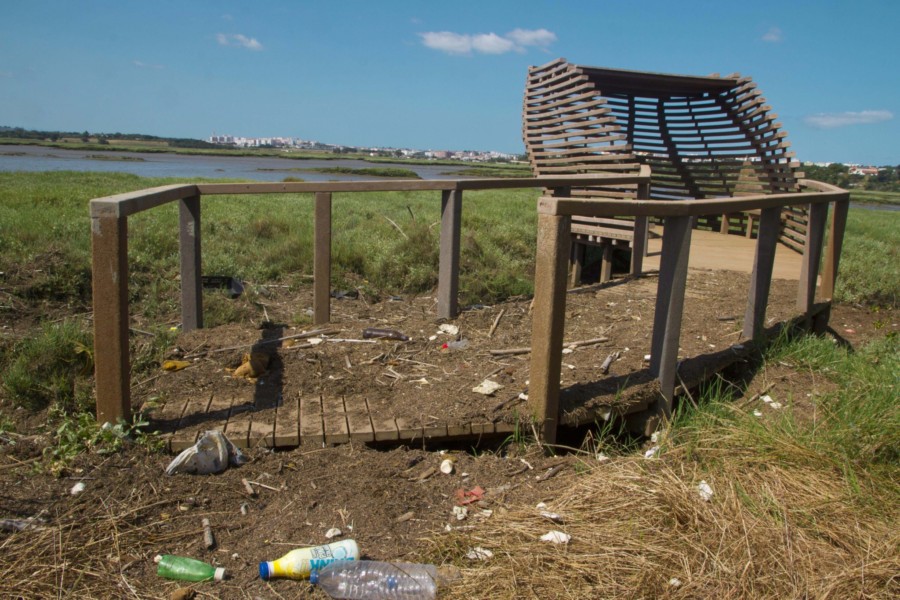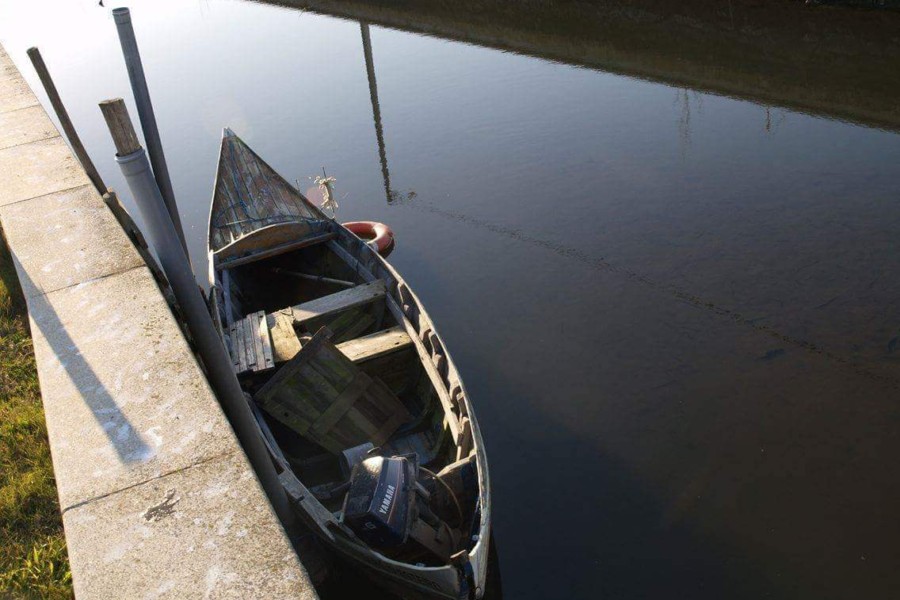
Marsh of Corroios: an environment rich either in bio diversity or in trash and scrap
Observatory of Birds in marsh of Corroios: a unique structure in Setúbal, Portugal, decisive to the conservation of nature, requiring attention.
The marsh of Corroios is the best preserved wet area all over the estuary of Tagus, south of Alcochete, Portugal, with a high biodiversity. The existing Observatory of Birds is an important structure giving support to the observation of nature, but it should receive more attention.
The marsh of Corroios plays a vital role in the populations of fish, bivalves, crustaceans and resident and migratory birds in the estuary of Tagus. Most of these birds come from the North of Europe; in winter, 5 to 10 thousand birds can stay in this area.
The vegetation presents a high biological productivity and the capacity of cleaning water from pollution.
Females with male characteristics reveal pollution by chemical TBT, in the area of Nazaré, Portugal
Despite prohibition since 1993, the use of anti vegetative paints on boats continues to pollute the marine ecosystems. A study made between November 2015 and May 2016, in Nazaré, shows that there are females of molluscs with sexual male characteristics. They become sterile, putting in danger the ecological balance.

Illegal gathering of mussels in river Tagus
Illegal gathering of mussels in Ponta dos Corvos, Seixal, estuary of Tagus, Portugal. A rentable activity but dangerous for the public health.
During May, we could see dozens of people in the river Tagus gathering bivalves to be sold to businessmen. An extra family income but a serious problem of public health, due to the presence of dangerous levels of toxins or microbiological contamination.
According to the Institute of the Sea and the Atmosphere, the gathering of bivalves is forbidden in the estuary of Tagus, since 3rd May. By the end of the month, at the low tide, dozens of people continue entering the river, as we can see in the photo taken in Ponta dos Corvos, Seixal. This prohibition is due to the “the presence of levels of toxins or microbiological contamination over regular levels”.
There are many businessmen who buy these bivalves at a low price and introduce them in the market, which may cause problems of public health.

A bateira e o renascer do esteiro
Na Ria de Aveiro, as bateiras desempenharam outrora um importante papel no transporte de pessoas, mercadorias e gado.


You must be logged in to post a comment.